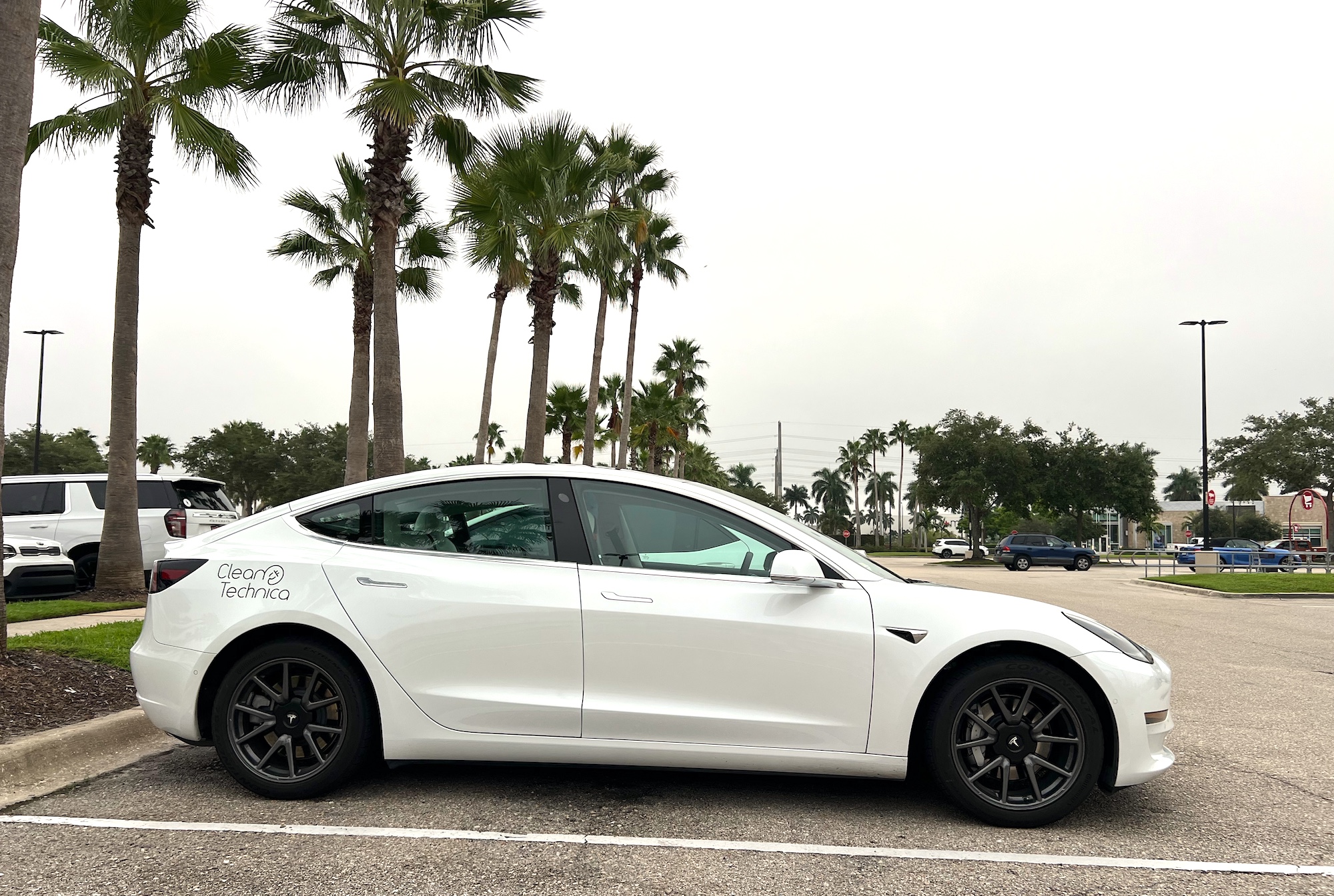
Sign up for daily news updates from CleanTechnica on email. Or follow us on Google News!
A rule of thumb I’ve been applying for a while is to look at what is succeeding in China in terms of clean technology. It tries everything that’s potentially viable domestically and fierce competition weeds out the winners from the losers. And on battery-electric buses vs hydrogen buses, and battery-electric vs hydrogen vehicles in general, the story is clear. Let’s illustrate it with the case of Beijing, China’s capital.
For some context, Beijing is a northern city 150 kilometers from the sea. It’s currently -11° Celsius (12° Fahrenheit), a not uncommon occurrence in the city during its winter. The record low was −27.4° C (−17.3° F). In the summer, it’s hot and humid, averaging 31° C (88° F) and 70% humidity. The record high was 41.9° C (107.4° F). Its climate is somewhat similar to Chicago’s or Washington’s in the United States, or Toronto in Canada.
It’s a big city, with 22.6 million residents in its 12,796.5 km2 (4,940.8 sq mi) area. It’s a bigger and more populous city than even New York and Los Angeles.
China leverages transit a lot more than most western cities, which developed in conjunction with the car. As of December 2024, the Beijing Subway system has expanded to 29 lines with 523 stations, covering 879 kilometers. The system handles an average of 10.5 million passenger trips per day, making it one of the busiest metro networks in the world. Line 10 alone serves around 1.34 million daily riders. It’s still expanding.
As of October 2024, Beijing’s public transportation system operates 2,257 bus lines, ranking first globally in the number of routes. On weekdays, approximately 20,000 buses are in service daily, collectively making around 147,000 trips and transporting over 6.6 million passengers each day. With a population of 22.6 million and 17.1 million transit trips a day, that’s a very high ratio of transit use by its citizens.
Beijing started shifting to low-emissions vehicles very early. The Beijing Summer Olympics in 2008 were a major coming out party for the country and Beijing’s air was notoriously bad. Along with other measures, cleaning up transportation was a key wedge they used to deliver blue skies. Over 3,800 natural gas buses and 50 electric buses were added to the fleet, while 2,580 older diesel buses were retired. Private vehicle use was restricted with an odd-even license plate system, and 300,000 high-emission vehicles were banned from the roads. Beijing also expanded its subway system, introduced 500 electric and hybrid taxis, and lowered public transit fares to encourage widespread use. It even had hydrogen buses. Three Mercedes-Benz buses were trialed starting in 2006 and three more were added from Chinese manufacturer Higer for the Games.
The next Olympics, the Winter Games in 2022, saw a transformed Beijing. While the city was still having bad air days, the sky was blue a lot of the days of the year without any special efforts by the government. As of 2022, the Beijing Subway system comprised 27 lines covering a total length of approximately 783 kilometers. By 2022, Beijing had solidified its position as a global leader in electric public transportation, with 12,000 buses in operation, the majority of which were battery-electric. Within the 3rd Ring Road, combustion-engine buses had become a rarity, underscoring the city’s aggressive push toward zero-emission transit. Beijing also maintained the world’s largest battery-powered trolleybus network, with 1,250 vehicles running across 31 routes.
While there were a few more hydrogen buses running, battery-electric buses had taken the lead by far. However, the Olympics tend to have a soft spot for hydrogen, and the city deployed over 800 hydrogen fuel cell buses. Leading Chinese manufacturers, including Foton AUV, Yutong, Zhongtong, and Geely, supplied the fleet, with 515 buses from Foton AUV alone covering 1.88 million kilometers. Another 200 light hydrogen vehicles were deployed as well. To support operations, Beijing constructed more than 30 hydrogen refueling stations.
As of early 2025, China has approximately 10,700 hydrogen fuel cell vehicles on its roads, primarily comprising buses and commercial trucks. The figure reflects a significant increase from previous years, but remains below the government’s target of 50,000 FCEVs by the end of 2025. As a reminder, China will be meeting its battery-electric car sales target of 50% of all cars sold this year, a decade earlier than planned.
So what’s happening in Beijing? As of October of 2024, of the 20,000 buses, 94.7% are zero emissions, almost entirely battery-electric.
In September of 2024, only 13 of the hydrogen refueling stations were still officially running, but a reporter for China’s respected domestic paper the Economic Observer went to all of them, and only seven were actually still in operation. Some stations were overgrown with weeds, some were not open to the public, and some had been closed. They found one station where overgrown wormwood had reached a height taller than a person, while hydrogen buses parked at the station showed visible signs of rust.
At another station, a single bus was being refueled while more than a dozen other buses were lined up. Each bus takes fifteen minutes to refuel, including the time to repressurize the station’s hydrogen tanks so that they can fill up the next bus, so in addition to driving long distances to get to the refueling stations, bus drivers have to wait an hour or longer for their turn.
It’s unclear how many hydrogen buses are still running in the city, but with the challenging hydrogen refueling situation and the sheer dominance of battery-electric buses, it’s most likely that most of the 800 new buses for the Olympics are rusting in lots in various places. I was only able to find one source that indicated that 200 hydrogen buses were still operating in one district of the city. The city has added a couple of small batches of new hydrogen buses a couple of times, but mostly it’s just bought and deployed an enormous amount more battery-electric buses.
The hydrogen buses are also acknowledged to be environmentally problematic. Until recently, the majority of the hydrogen used for hydrogen vehicles was manufactured from domestic coal. Coal-to-hydrogen production, known as coal gasification, converts coal into hydrogen by reacting it with steam and oxygen at high temperatures. Producing 1 kilogram of hydrogen from coal releases 20 to 25 kilograms of CO₂e, making it one of the most carbon-intensive hydrogen production methods. That made the early hydrogen buses higher greenhouse gas emissions than diesel buses, but the focus for the first Olympics was air quality, not climate change.
The high costs of building and operating hydrogen refueling stations in China pose a major challenge for investors. With hydrogen priced at 30 yuan (US$4.12) per kilogram, a station selling 2,000 kilograms per day generates only 60,000 yuan (US$8,233) in daily revenue. However, substantial electricity expenses, running into several thousand yuan daily, combined with labor and maintenance costs, make it difficult to recover the initial investment and achieve profitability. As a note, that’s by far the lowest retail price for hydrogen I’ve seen in the world, but firms that make hydrogen are building the stations in a zero profit attempt to build a market.
The construction cost of a hydrogen refueling station with a daily capacity of 1,000 kilograms and a 700 bar compression system is at least 20 million yuan (US$2.75 million), including design, construction, maintenance, and management costs. Equipment accounts for 80% of this total, with the hydrogen compressor alone making up 30%, or approximately 6 million yuan (US$823,800). Pipes, valves, hydrogen tanks, and filling equipment each represent 13% of the total cost, amounting to around 2.6 million yuan (US$357,980) per category.
The costs for the hydrogen refueling station, interestingly, are very similar to western costs. This is a place where China can’t build things more cheaply, it seems. Some of the difficulties are due to hydrogen being accurately defined as a hazardous chemical, so a safety production license is required for each of production, storage, transportation, and filling.
As of June 2024, the average electricity price for businesses in China was 0.634 CNY per kWh, equivalent to approximately US$0.088. That means filling up a battery-electric bus for a 300 km day might cost $35, while filling up a hydrogen bus would cost $100 for the same distance, even with zero profit hydrogen.
As of 2023, China’s average carbon intensity of electricity generation was approximately 582 grams of CO₂ per kilowatt-hour, about where the USA was in 2015. Assuming that they were electrolyzing the hydrogen with grid electricity in centralized facilities, that’s still about 38 kg of CO2e per kg of hydrogen. That means about a ton of CO2 for a 300 km day, so the buses still aren’t climate wins compared to diesel buses, but still are air quality wins, for what that’s worth. That’s without counting any leakage of hydrogen, which is a potent, if indirect, greenhouse gas. Electric buses, by comparison, would be running around 0.25 tons of CO2e for the same journey, and less each year as the grid decarbonizes.
After 19 years of putting hydrogen and electric buses on the road in Beijing, there are about 19,000 battery-electric buses operating, a bunch of the hydrogen buses deployed for the Olympics are rusting in various parking lots, the number of hydrogen refueling stations has dropped from thirty to seven and hydrogen buses are still worse than diesel for greenhouse gas emissions. Even China can’t make hydrogen for transportation work.
Chip in a few dollars a month to help support independent cleantech coverage that helps to accelerate the cleantech revolution!
Have a tip for CleanTechnica? Want to advertise? Want to suggest a guest for our CleanTech Talk podcast? Contact us here.
Sign up for our daily newsletter for 15 new cleantech stories a day. Or sign up for our weekly one if daily is too frequent.
CleanTechnica uses affiliate links. See our policy here.
CleanTechnica’s Comment Policy




